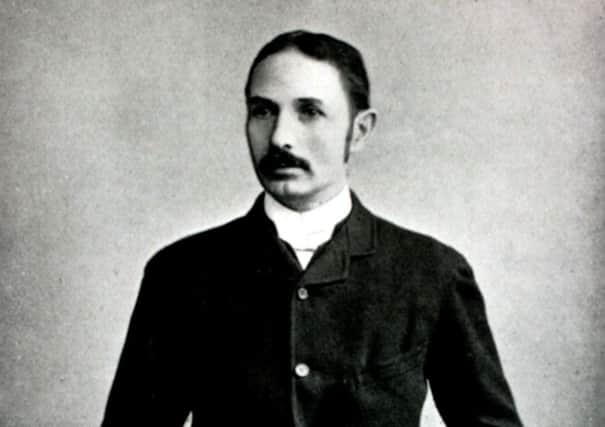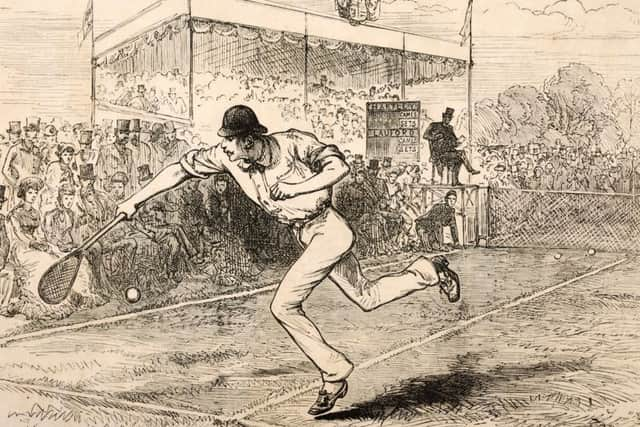The Yorkshire vicar who moonlighted as a tennis legend


To the outside world, however, he was John Hartley, tennis trailblazer and the third man ever to win the men’s singles title at Wimbledon. So good was Hartley that he went back to the All England Club the following year and won it again, becoming the first player ever to retain the famous trophy. Not even Andy Murray in his pomp managed that. They don’t, it’s fair to say, make vicars like Burneston’s finest any more.
Born in Wolverhampton in 1849, Hartley took up lawn tennis in his 20s after moving to Burneston to assume his priestly duties. He was one of six players who dominated the game, becoming superstars of their time – the others being brothers William and Ernest Renshaw, Patrick Hadow, Herbert Lawford and Spencer Gore, the first man ever to win the men’s singles at Wimbledon.
Advertisement
Hide AdAdvertisement
Hide AdHartley’s first Wimbledon title came in 1879 at 30 when he beat the wonderfully named Vere Thomas St Leger Goold 6-2, 6-4, 6-2 in the final. Although he retained the trophy 12 months later beating Lawford in four sets, finishing runner-up in 1881 to William Renshaw, it is that first final which still raises plenty of smiles around the All England Club.


“John Hartley was a defensive-type player who got every ball back, keeping it in play until the other fellow missed,” says the celebrated tennis writer Richard Hillway, co-author of the book The Birth of Lawn Tennis, commissioned by Wimbledon to mark the 150th anniversary of the All England Club this year.
“The great thing about John in 1879 was that he wasn’t prepared to play beyond the (middle) weekend of the tournament. And so he had to take a train back to Yorkshire to give a sermon on the Sunday, then catch an early train the next morning to London to play his final match, which was on the Monday. He got there by the 2pm start, beat St Leger Goold who had just won the Irish Championship, and as a result became the third man ever to win the Wimbledon title.”
Several years after losing to Hartley, in a peculiar postscript to the 1879 final, St Leger Goold was found guilty along with his wife Marie Girodin of killing a wealthy Danish widow by the name of Emma Liven in Monte Carlo. He was sentenced to penal servitude for life on Devil’s Island, French Guiana, where he died in 1909 aged 54.
Advertisement
Hide AdAdvertisement
Hide AdBy that time Hartley had long since given up tennis and become Honorary Canon of Ripon Cathedral. Now there’s a salutary lesson in right and wrong for you.
Hartley remained a North Yorkshire resident for the rest of his life, passing away at his home in Knaresborough in August 1935 aged 86. But there remains a corner of London where he will always be remembered having paved the way for modern day greats such as Rafael Nadal and Serena Williams. Hartley, being an amateur, earned nothing for his exploits, surviving off his priestly salary and playing for the love of the game.
“He’s part of the Wimbledon fabric,” adds Hillway. “It took something special to win a title here, even then. To come back again the following year and win it a second time, the first person ever to do that, just shows you what a player he was.
“Spencer Gore gets all the glory for winning the first one, but John’s achievement is right up there as well. The fact that he was this preacher, leading a good life, while St Leger Goold got in a lot of trouble and ended up on Devil’s Island simply adds to the story.
Advertisement
Hide AdAdvertisement
Hide Ad“They were pioneers – John, Spencer Gore, the Renshaws, Hadow, Lawford – and this place might not exist now if they hadn’t put it firmly on the map back then. They deserve not only to be remembered, but celebrated.”